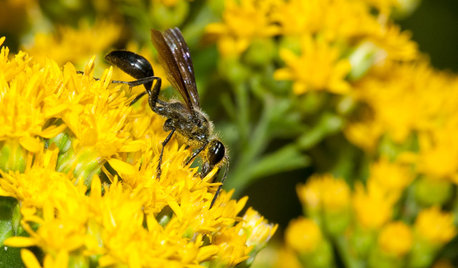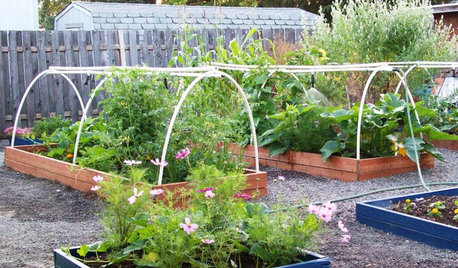Hand Pollination and New Bean Varieties
venom_within
16 years ago
Related Stories

GARDENING GUIDESMeet the Grass-Carrying Wasp, a Gentle Pollinator of Summer Flowers
These fascinating insects nest in wood cavities and hollow plant stems
Full Story
BENEFICIAL INSECTSAttract Pollinators for a Productive Edible Garden
You can lure bees, butterflies and birds into your yard with the right flowers and nesting spots
Full Story
GARDENING GUIDES6 New Plant Varieties That Beat Out Their Parents
With better resistance and fewer demands, these garden beauties are worth a spot on your wish list
Full Story
DECORATING GUIDESBean There, Done That: Coffee Table Alternatives
Get creative with these ideas for salvaged and DIY pieces that will get people talking
Full Story
GARDENING GUIDES10 Easy Edibles for First-Time Gardeners
Focus on these beginner-friendly vegetables, herbs, beans and salad greens to start a home farm with little fuss
Full Story
EDIBLE GARDENSSummer Crops: How to Grow Squash
Almost foolproof and with cheerful flowers, squash comes in a wide range of varieties to plant in spring
Full Story
LIFEImprove Your Love Life With a Romance-Ready Bedroom
Frank talk alert: Intimacy and your bedroom setup go hand in hand, says a clinical sexologist. Here's her advice for an alluring design
Full Story
FRUIT TREESHow to Grow Your Own Juicy Plums
Easier than other stone fruits and with a variety of colors to choose from, plums are a versatile garden addition
Full Story
GARDENING GUIDESAttract Hummingbirds and Bees With These Beautiful Summer Flowers
Roll out a welcome mat for pollinators to keep your landscape in balance and thriving
Full Story
EDIBLE GARDENSGarden BFFs? Why Your Vegetables Are Begging for Companion Plants
Foster friendships among plants for protection from pests, pollination support and color camaraderie
Full StoryMore Discussions






farmfreedom
venom_withinOriginal Author
Related Professionals
Milwaukee Landscape Architects & Landscape Designers · Salem Landscape Architects & Landscape Designers · Fort Mill Landscape Contractors · Haverhill Landscape Contractors · Kahului Landscape Contractors · Kailua Landscape Contractors · Saint John Landscape Contractors · University City Landscape Contractors · Arnold Carpenters · Homer Glen Carpenters · Valdosta Carpenters · Columbia Fence Contractors · Fountain Fence Contractors · Golden Fence Contractors · Kuna Fence Contractorsmistercross
b_bahali_yahoo_com
kobetje_shaw_ca
zen_man
keking